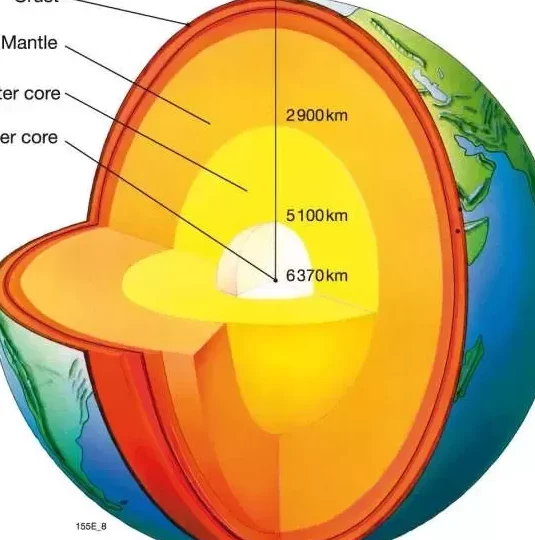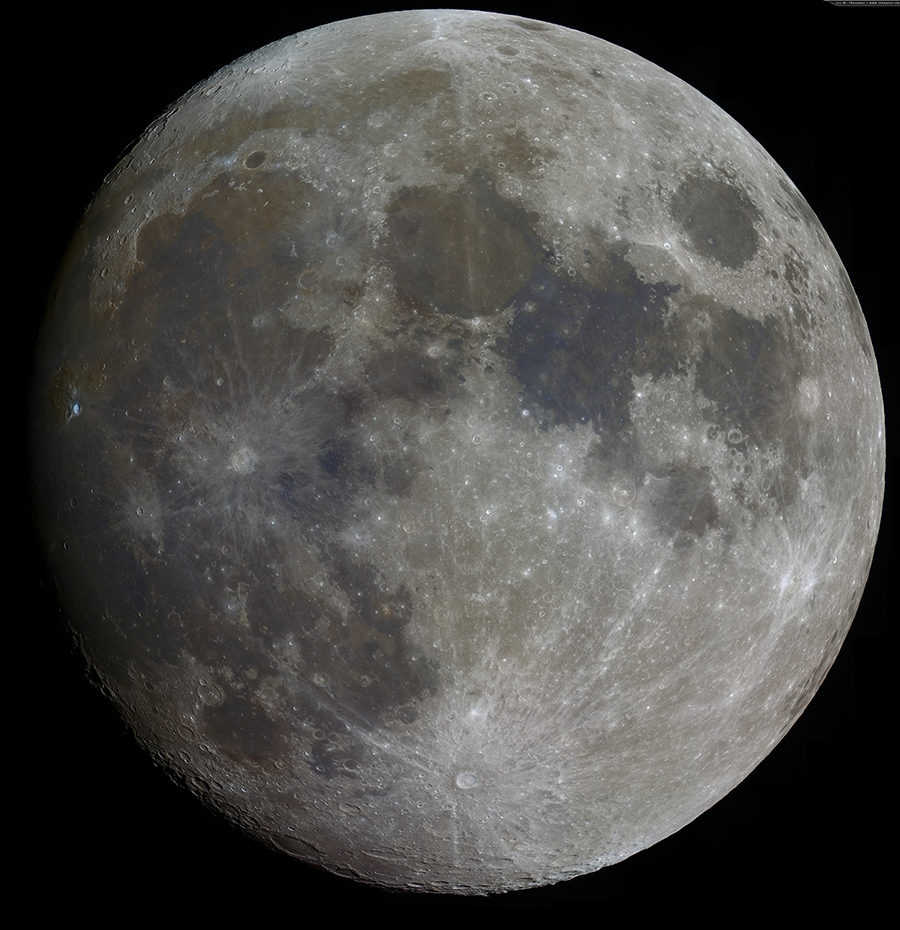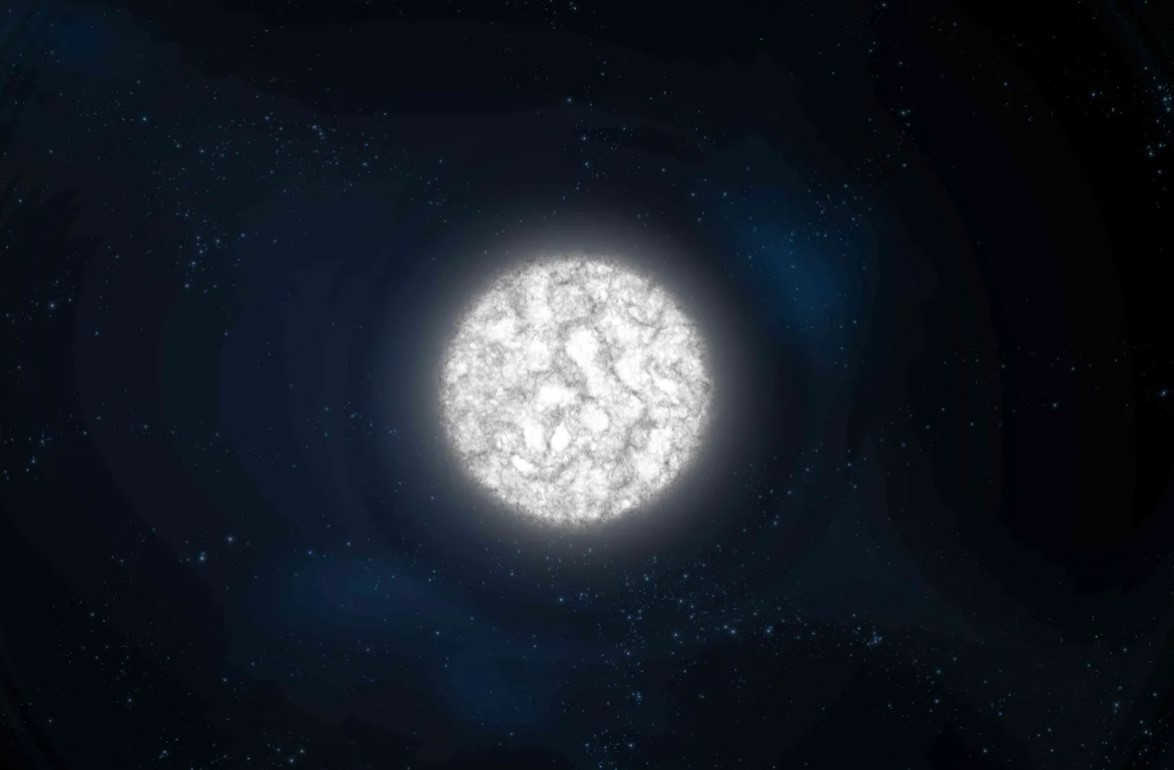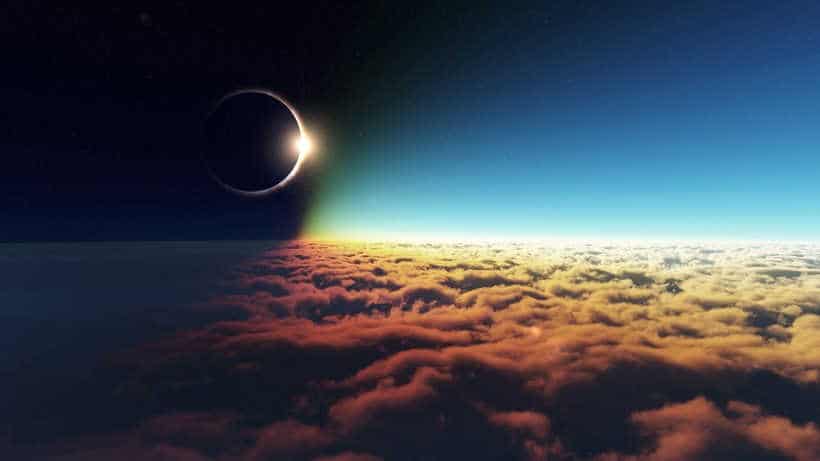
The measurement of the distance to the Earth’s center in kilometers is a parameter that is subject to interpretation, with scientists from different developed countries using slightly different approaches. Regrettably, humans have a limited understanding of the internal structure and rotational characteristics of our own planet compared to our knowledge of nearby celestial bodies. The complex calculations performed in global scientific endeavors to determine the exact number of kilometers to the Earth’s center often yield discrepancies in the resulting figures.
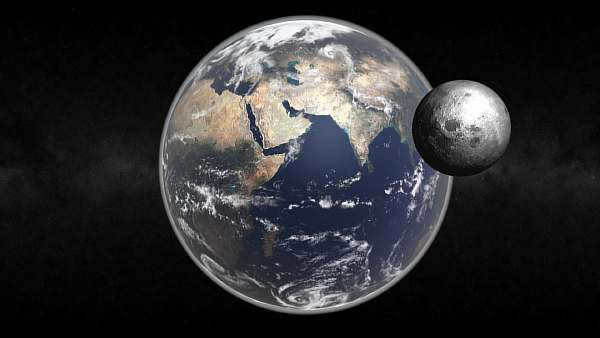
A Brief Overview of the Question’s Background
The presence of various hypotheses regarding the internal structure of the Earth can be attributed to the paradoxical and persistent nature of human thought, as well as the differences in mentalities, worldviews, and scientific research capabilities. The human race tends to entertain different possibilities and theories.
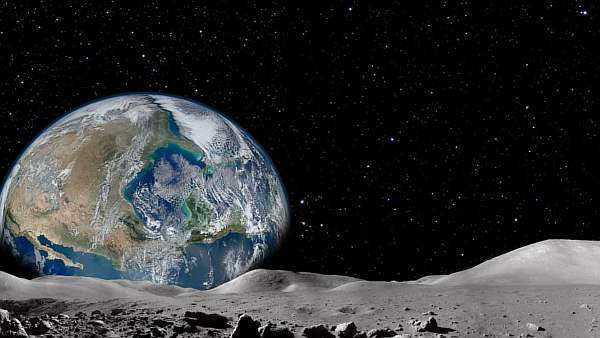
The figures used by Russia and the former Soviet Union to determine the distance to the center of the Earth were obtained in 1940 by Feodosy Nikolaevich Krasovsky, a renowned Soviet astronomer, geodesist, and corresponding member of the USSR Academy of Sciences.
There is a widely accepted scientific theory that states the Earth consists of a crust, core, and mantle, with all the necessary information for life. However, there are also incredible theories that propose the existence of voids within the planet, inhabited by strange and incomprehensible creatures, or even an underworld.
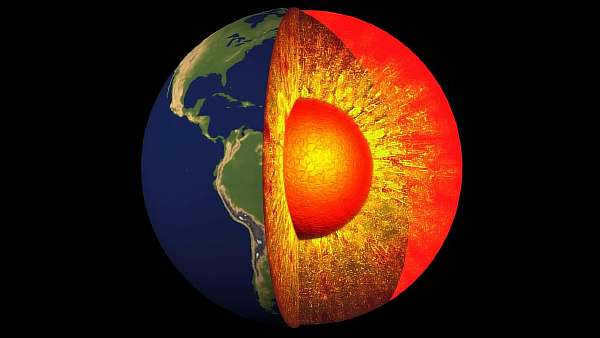

The quest for an answer to this particular question – how many kilometers to the center, has its own theoretical, practical, and even mystical prerequisites:
- Efforts to penetrate into the depths of the blue sphere have been unsuccessful at a depth of approximately 12 kilometers, and there are extraordinary tales surrounding these attempts. Academician Obruchev even penned a science fiction novel about a journey to the Earth’s core, which once garnered great popularity. Even the surface of our planet remains largely unexplored, let alone the world’s oceans, which are believed to accurately represent the true shape of the Earth, but are actually located several tens of meters below the surface of the ellipsoid described by Krasovsky.
- The subject of the contents of the planet for pseudoscientific websites is the most fertile out of all the options, and based on various depictions of the underworld, our ancient predecessors were just as concerned about what lies beneath their feet as they were about the distant skies.
- For astronomers captivated by the makeup of the cosmos, the ultimate resolution to the student query of how many kilometers to the Earth’s core is simply discovering another astronomical value to incorporate into their computations.
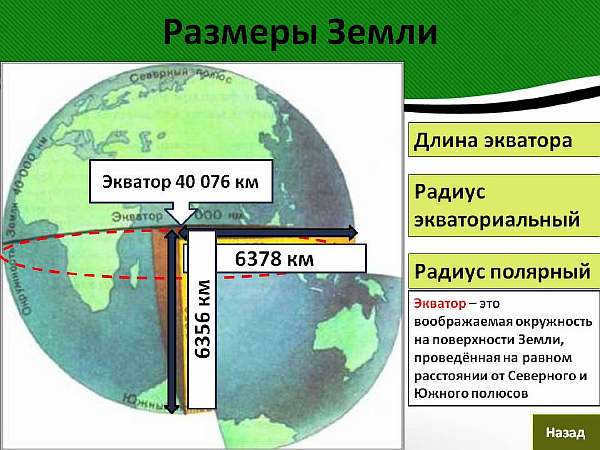
Numerologists and enthusiasts of the magical properties of numbers would love to categorize the Earth’s radius as being equal to 384,000 km, which is the distance to the Moon. However, this is purely a conventional belief and ignores the existence of other dwarf planets and the fact that Pluto is no longer considered a planet in the Solar System.
And without a doubt, they have no desire to speculate on the potential existence of another force governing the small undulations of dwarfs. When making the assertion that the Earth can fit precisely 30 times within a distance of 384400, they conveniently overlook the thousands of kilometers that remain after such an arrangement.
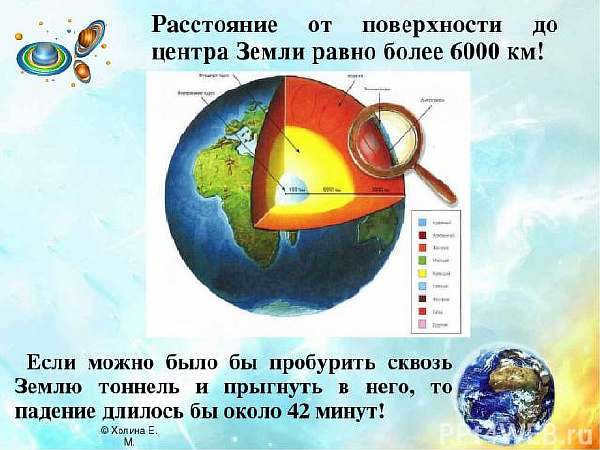
Galaxy
The Milky Way is situated at such a vast distance that it is unfathomable to the average person’s mind. This also has an indirect impact on our planet, specifically in determining the number of kilometers from the Earth’s surface to its core. The law of universal gravitation states that every celestial body in the cosmos exerts influence on its neighboring objects.
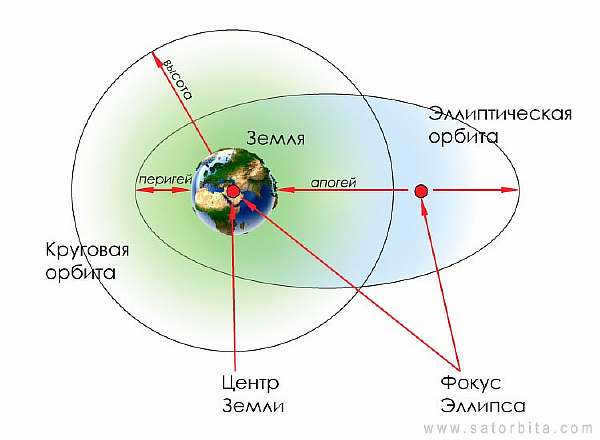
It is quite easy to establish a connection between the current shape of the Earth and the Milky Way. This can be accomplished by performing calculations of trajectories, orbits, or interactions.
The individual responsible for discovering the ellipsoid, a more accurate representation of the Earth’s shape compared to the traditional globe, which depicts it as a sphere, was F.N. Krasovsky. Alongside his esteemed co-author, A.A. Izotov, he worked as a geodesist. Additionally, Krasovsky had expertise in astronomy, while Izotov was a member of the All-Union Astronomical and Geodesic Society at the USSR Academy of Sciences.
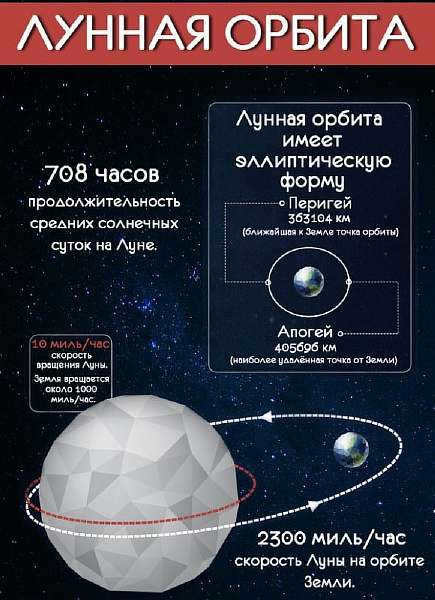
It is evident from this that even prior to the Great Patriotic War, individuals with extensive knowledge comprehended the infeasibility of studying the planet in isolation from space, as well as investigating outer space without a profound understanding of the Earth’s structure, shape, velocity, and orbit.
To determine the distance to the hypothetical center of the globe, one simply needs to calculate the diameter and divide it by two. This offers a simple and direct method for computing distances to the Earth’s center, assuming that the planet is indeed spherical in shape.
However, due to its constant movement and the presence of various celestial bodies, it was compelled to alter its shape, resulting in different figures for its radius in different locations.
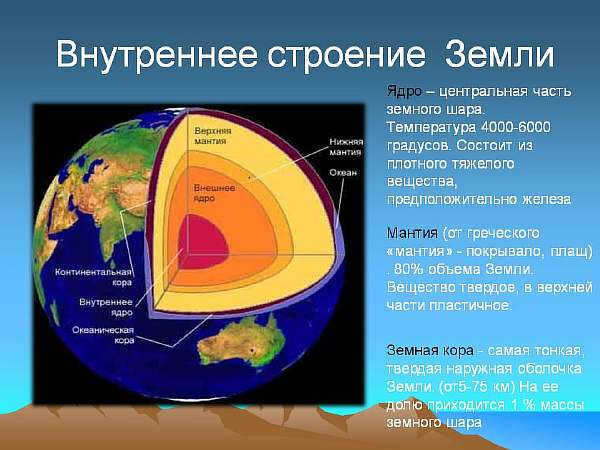
Given that space exploration was still in the planning stages during that time, alternative methods were used to gather the necessary information to determine the actual shape of the Earth. However, when data from the first artificial satellite launched three decades later became available, it confirmed the accuracy of Izotov and Krasovsky’s findings.
Sizes and representations of the Earth
The mean measurement of the span from the exterior to the core of our planet is rather arbitrary. It amounts to 6371.032 kilometers, which is the measurement between the equatorial and polar radii.
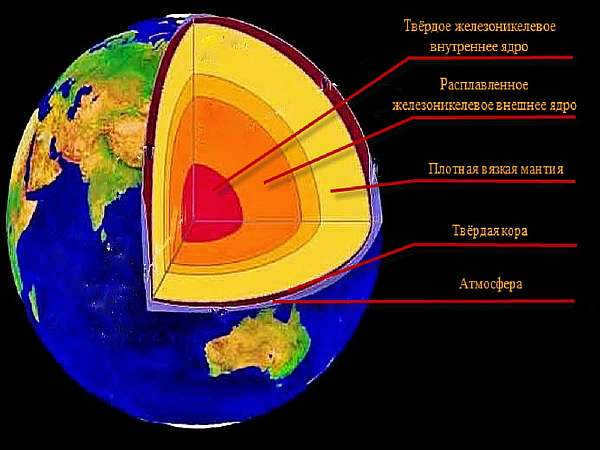
Considering that the distance from the surface to the center of the Earth is 6378.160 km at the equator and 6356.777 km at the pole, there is a significant range of 21383 km between the two.
It is not hard to imagine that across the vast expanse of the Earth’s surface (510.2 million square kilometers), there will be numerous other locations where this distance will vary within different limits.
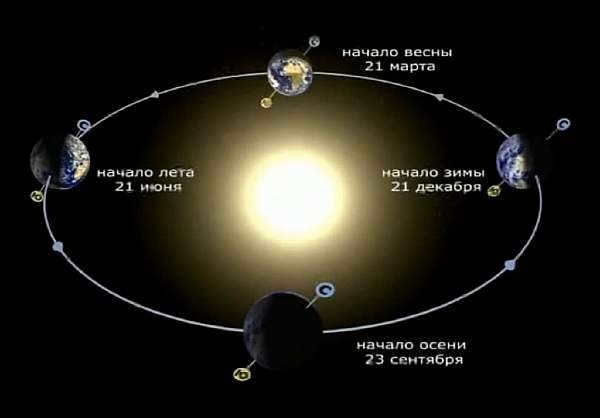
The size of the Earth may vary due to tectonic movements, measurements taken from the highest mountains or deepest ocean trenches, but its largest size will always be at the equator and its smallest size will always be in Antarctica. In order to reconcile the different scientific perspectives, scientists have adopted a definition – the geoid.
The geoid is the shape of the Earth, which is formed as a result of its rotation around its axis and around the center of mass of the solar system. Its formation was influenced not only by one satellite, but also by its two closest neighbors in space, as well as all the other satellites, both near and far.
To avoid the hassle of searching for definitions, we opted for a fresh one, inspired by geometric terminology. The Earth’s gravitational, magnetic, and electric fields, when combined, produce a truly distinctive impact on its contours.
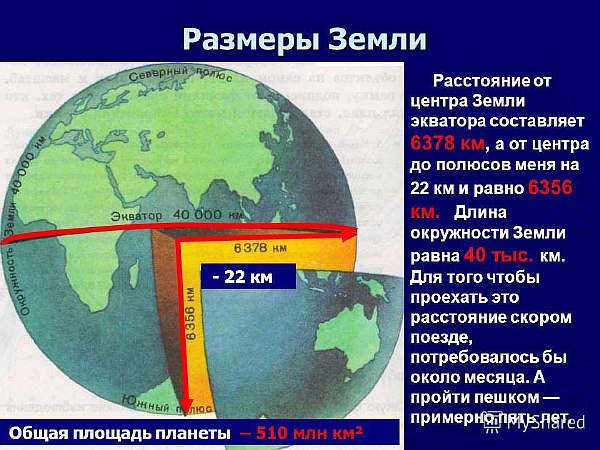
When searching for an appropriate designation, the concept of a three-axis ellipsoid and spheroid was proposed. Various scientific schools were tasked with finding a more accurate representation of the true state of affairs.
The arrangement is paradoxical in nature: a mountain located at the pole, standing 10 km tall, is actually closer to the center of the Earth than a depression located near the equator.
An interesting example involving mountains can also be observed: Jomolungma, which stands 2.5 km higher than the equatorial peak of Chimborazo, is actually closer to the center of the Earth by 2 km. This is due to the fact that the sea level at the equator is four kilometers higher than the location of the highest point in Asia.
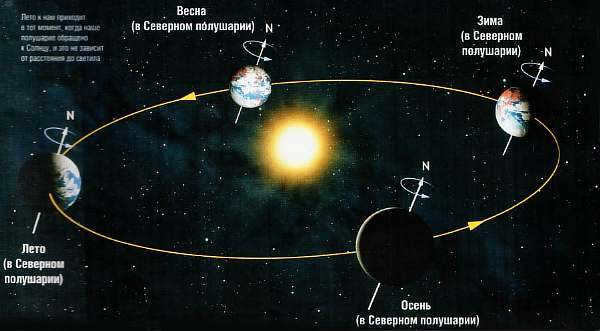
Researchers
The Soviet Union and its scientists have made a significant contribution to understanding the Earth’s shape and the distance from its center to the surface. This distance, which is not actually equal to the radius of a perfect sphere, holds great importance in scientific research.

- The Central Research Institute of Geodesy, Aerial Photography and Cartography was established by Theodosius Krasovsky;
- Krasovsky also devised a research program in astronomy and geodesy, leading to the creation of astronomical and geodetic networks across the Soviet Union;
- despite being a country with various pressing needs, funds were found and allocated for the construction of these networks, enabling topographical surveys to be conducted;
- the objective of these surveys was to determine the shape and dimensions of the Earth, which, although not an immediate concern, posed a promising scientific challenge for the future;
- The shape of the Earth was determined as an ellipsoid based on measurements taken in 1940. This finding is utilized in Russia and other nations, although not universally.
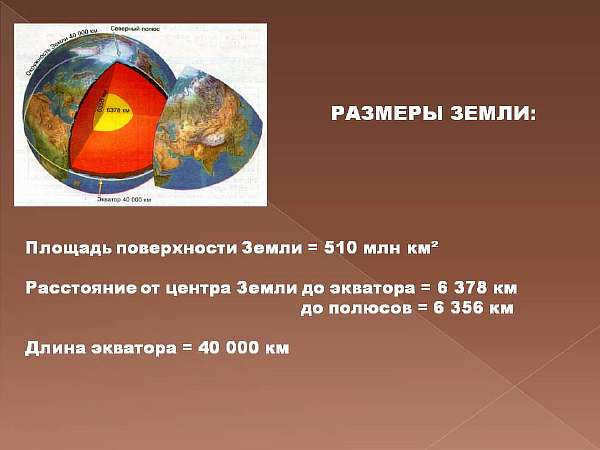
The Soviet Union was unrivaled in its astronomical and geodetic measurements. Despite the significant setbacks caused by the Great Patriotic War, which greatly impacted the country’s well-being and scientific advancements, the entire territory of the state was encompassed by state triangulation networks by 1970.
These measurements not only allowed for the calculation of the distance from the Earth’s surface to its center (the approximate radius of an irregular sphere) anywhere on the planet but also solidified the USSR’s unquestionable dominance in space exploration.
The International Astronomical Union honored the Russian genius of cartography and geodesy, Theodosius Krasovsky, by naming one of the craters on the lunar surface after him. Additionally, they named the ellipsoid discovered by Krasovsky in his honor – the Krasovsky ellipsoid.
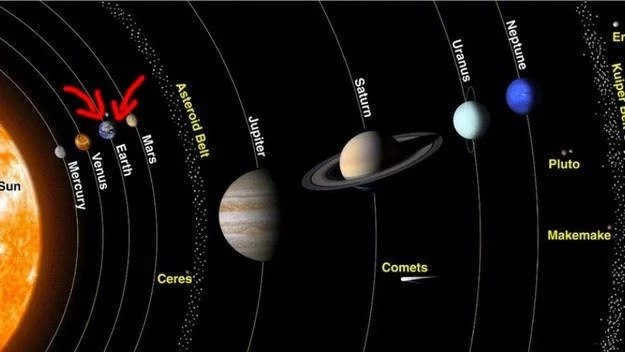
Had research not been conducted, the knowledge of the various diameters and radii of the planets may have remained undiscovered by science, leaving them to be determined solely through general calculations.
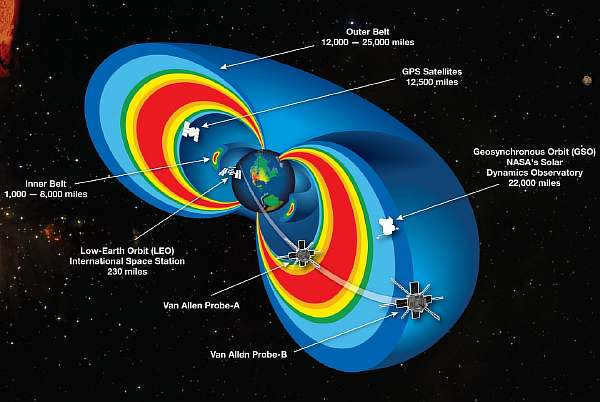
Now, with the knowledge of the latitude, equatorial radius, and polar radius, it is possible to accurately determine the distance from the center of the Earth to any point on its surface, whether it be a mountain or a depression. The equatorial radius measures 6378.160 kilometers, while the polar radius measures 6356.777 kilometers.

Throughout history, mankind has achieved remarkable feats, from exploring uncharted lands to soaring through the skies and diving to the depths of the ocean. We have even ventured beyond the Earth’s atmosphere and set foot on the moon. However, despite our incredible progress, the core of our planet remains an enigma that eludes us.
Unraveling the secrets
Despite our best efforts, we have barely scratched the surface. The Earth’s core lies a staggering 6,000 kilometers beneath its outer crust, with even the outermost part of the core resting 3,000 kilometers below the reach of human civilization. The deepest well ever drilled by man, located in Russia, extends a mere 12.3 kilometers into the Earth’s depths.

All major occurrences on the planet also occur nearer to the surface. The molten rock that volcanoes eject becomes a liquid at a depth of a few hundred kilometers. Even diamonds, which necessitate heat and pressure to be created, form at a depth of 500 kilometers.
Everything beneath is enveloped in enigma. It appears unfathomable. And yet we possess a remarkable quantity of knowledge about the Earth’s core. Scientists even have some understanding of its formation billions of years ago. And all of this without a solitary physical sample. But how was it unveiled?
The Earth’s Mass
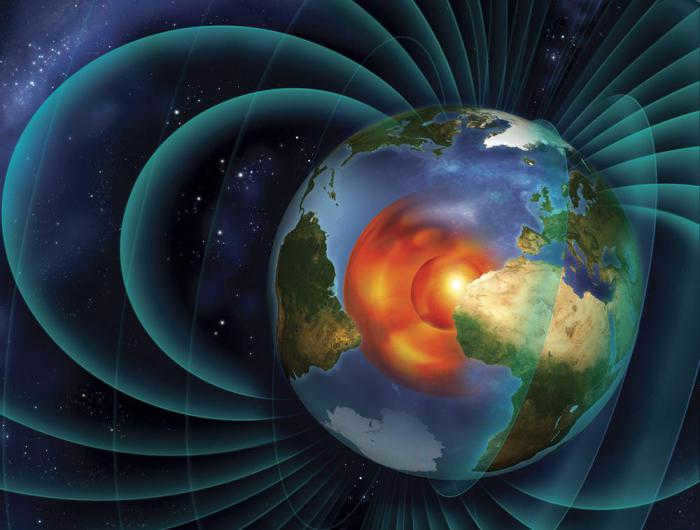
A good method to consider is to contemplate the magnitude that the Earth possesses. We can approximate the magnitude of our planet by observing the impact of its gravitational force on objects that are situated on its surface. It transpires that the magnitude of the Earth is 5.9 sextillion tons. That equates to the number 59 followed by 20 zeroes. And there is no indication that there is anything of such enormity on its surface.
The density of substances on the surface of the Earth is considerably lower than the average density of the planet. This implies that there must be something with a much higher density existing within it.
Moreover, the majority of the Earth’s mass should be concentrated towards its center. Consequently, the subsequent step is to ascertain which heavy metals constitute its core.
The composition of the Earth’s core
Scientists propose that the core of the Earth consists predominantly of iron, with estimates suggesting it may make up as much as 80% of its composition. However, the precise percentage remains a subject of ongoing discussion and research.
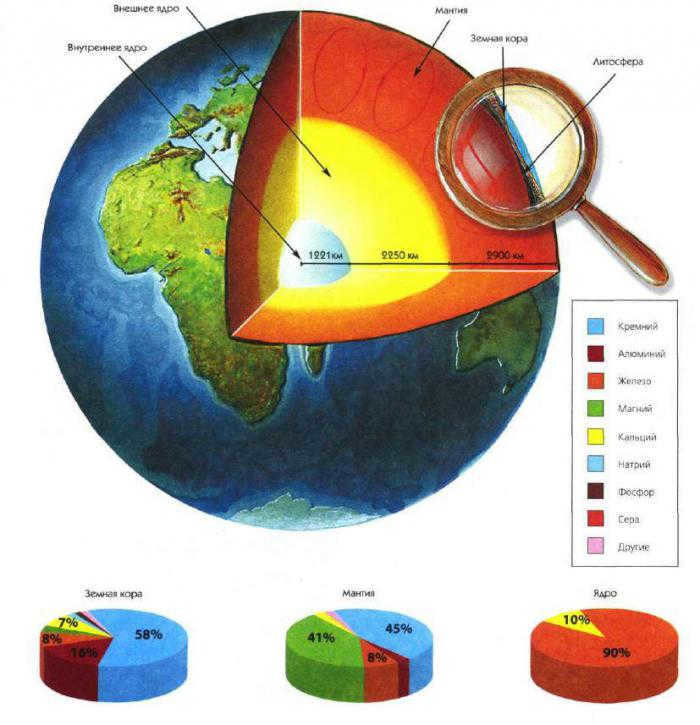
The primary indication of this is the substantial quantity of iron present in the cosmos. It is among the top ten most abundant elements in our galaxy and is frequently discovered in meteorites. With such a significant amount of iron, it is surprising that it is not more prevalent on the Earth’s surface. As a result, a theory suggests that during the Earth’s formation 4.5 billion years ago, a majority of the iron ended up becoming part of the core.
This is the reason why the core constitutes the majority of our planet’s mass, with most of the iron also located within it. Iron is a relatively dense element under natural circumstances, and it becomes even denser under the extreme pressure at the Earth’s center. Consequently, the iron core accounts for all of this mass not reaching the surface. However, a question arises: how is it that the majority of the iron is concentrated in the core?
The mysteries behind the creation of the Earth’s core
The iron must have somehow been drawn towards the core of the Earth. However, the process by which this occurred is not immediately apparent.
The majority of the Earth’s mass consists of silicate rocks, and molten iron attempts to make its way through them. Similar to how water can form droplets on a greasy surface, iron accumulates in small reservoirs where it cannot disperse any further or be depleted.
In 2013, a potential solution was uncovered by researchers at Stanford University in California, USA. Their focus was on the effects of intense pressure on both iron and silicate, which mimic the conditions that existed at the Earth’s core. By utilizing diamonds to apply pressure, the scientists successfully propelled molten iron through the silicate. This process revealed that under high pressure, the dynamic between iron and silicates undergoes a significant transformation. The result is the formation of a molten network at increased pressures. From this, we can infer that over the course of billions of years, iron gradually descended through the rocky layers until it eventually reached the core.
The dimensions of the nucleus
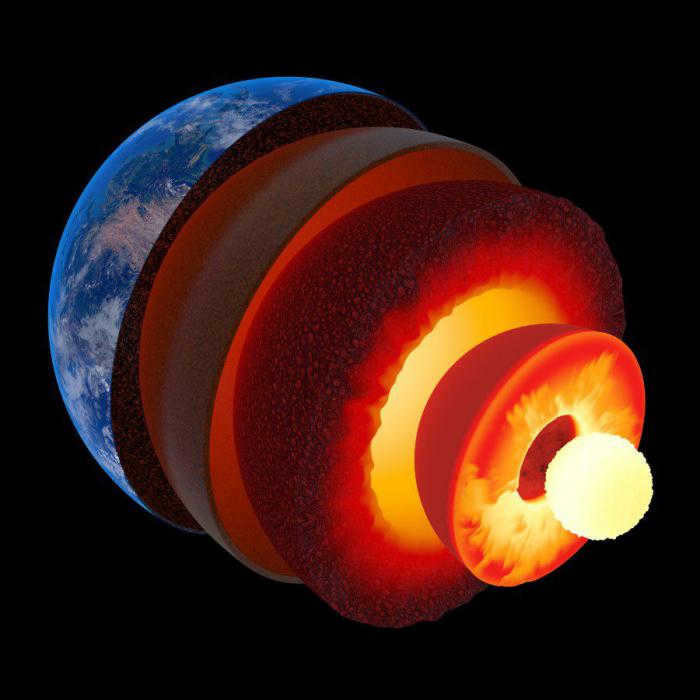
You may also be curious about how scientists determine the size of the core. What leads them to believe it is located approximately 3000 kilometers beneath the Earth’s surface? The field of seismology holds the answer.
During an earthquake, seismic waves propagate throughout the globe. These vibrations are recorded by seismologists, who liken the process to striking one side of a planet with a massive hammer and listening for the resulting noise on the opposite side.
A wealth of data was gathered during the 1960 Chilean earthquake. Seismological stations all over the world were able to detect and record the tremors generated by this event. The path these vibrations take depends on their direction, traversing various regions of the Earth, which ultimately influences how they resonate in other parts of the planet.
Early on in the history of seismology, it became evident that certain vibrations were going missing. The so-called S-waves were anticipated to emerge on the opposite side of the globe, yet this phenomenon never occurred. The explanation for this was rather straightforward. S-waves could only bounce off solid substances and were incapable of doing so through liquid mediums. Thus, they had to travel through some molten substance located at the Earth’s core. Upon analyzing the paths of these S-waves, scientists discovered that solid rock transitions into a liquid state at a depth of 3000 kilometers. This discovery indicated that the Earth’s core possessed a liquid composition. However, seismologists were in for yet another unexpected revelation.
The composition of Earth’s core
In 1930, Inge Lehmann, a Danish seismologist, made an observation that P-waves, a different type of wave, were able to traverse through the Earth’s core and be detected on the opposite side of the planet. This led scientists to infer that the core consists of two distinct layers. The inner layer, which commences roughly 5,000 kilometers beneath the Earth’s surface, is comprised of solid matter. Conversely, the outer layer exists in a liquid state. The validity of this hypothesis was substantiated in 1970, when more sophisticated seismographs confirmed that P-waves were capable of traversing through the core, sometimes even deflecting away from it, yet still detectable on the other side of the planet.
A student at McGill University in Canada, Alexander Klotz, has improved the calculation of the time it takes for an object to fall to the center of the Earth through a tunnel. In the classical problem, the Earth’s density is usually assumed to be uniform. However, Klotz took into account the real density of the Earth, which varies from the surface to the core. As a result, he found that the time it takes for an object to fall to the center of the Earth is 38 minutes, instead of the usual 42 minutes. Klotz published his solution in the American Journal of Physics and it was popularized by Science.
The Earth can be simplified as a billiard ball, with a consistent density of approximately 5500 kg/m3. As an object moves closer to the Earth’s center, the gravitational force acting upon it changes. This is due to the varying amount of Earth’s mass above and below the object’s position within the tunnel. Newton’s theorem states that there is no gravity inside the center of the planet, hence it gets its name. Once the object surpasses the center of the Earth, it falls towards the other side of the tunnel. Eventually, it reaches the opposite end of the tunnel and falls back down, resembling the movement of a pendulum. Therefore, the object travels through the tunnel in a pendulum-like motion.
Alexander Klotz performed a simple task – he determined the actual density of the planet.
This density varies in different regions of the planet.
For instance, Earth’s crust and mantle are less dense compared to the core. Klotz obtained the
mass distribution data from the Preliminary
Reference Earth model, which is based on seismic data.
According to this model, the densities at the surface are less than 1000 kg/m3, while at the center of the core they reach about 13,000 kg/m3. The distance from
the surface to the Earth’s center is 6371 km. Taking these conditions into account,
Klotz calculated that an object would take approximately 38 minutes and 11 seconds to fall through a tunnel to the center of the Earth. In comparison, the fall time in a scenario with
Earth of uniform density is 42 minutes 12 seconds.
gravity
earth density
free fall acceleration
Information provided by the Information Agency “Scientific Russia”. Media registration certificate: IA No. FS77-62580, issued by the Federal Service for Supervision of Communications, Information Technologies and Information Technologies.
by the Federal Service for Supervision of Communications, Information Technology and Mass Communications on July 31, 2015.
SCIENCE FOR KIDS
Researchers have made it easier to use carbon nanotubes in polymer nanocomposites
An innovative approach to teaching economics. The Higher School of Economics celebrates its 30th anniversary
10:30 / Science and Society, Education, Economics
Anders Celsius was born on November 27th
Academician Vladimir Khavinson’s birthday
09:55 / Biology, Health, Medicine
An algorithm developed by scientists at Perm Polytechnic will enhance the reliability of aircraft engine control.
Vladislav Khomich, Academician-secretary of the Department of Power Engineering, Mechanical Engineering, Mechanics and Control Processes, is leading the project.
At 13:00, the team will present their findings on Engineering, Science and Society, New Technologies, and Persona.
A groundbreaking new model has been created to predict species extinction due to global warming.
Biology, Climate, and Ecology will be the focus of the presentation at 12:00.
On November 26, the world will celebrate World Information Day.
The event will highlight the impact of Information Technologies on Science and Society at 10:00.
Scientists at St. Petersburg Polytechnic have made a groundbreaking discovery regarding a new effect in glasses.
The JINR CPP session took place for the first time on the African continent.
At 15:00, the session will explore the intersection of Science and Society, with a focus on Physics.
In commemoration of the brilliant scientist. The realm of science in the global community. “Evident – Extraordinary” broadcasted on 10.05.2008.
In remembrance of the exceptional scientist. Nanotechnology. “Evident – Extraordinary” aired on 3.08.2002.
Recalling Sergey Kapitsa
The distance from the Earth’s surface to its core and its temperature
Within the composition
of each celestial body lies a core. Typically, it is stratified. It serves as
a sort of foundation for a spherical astronomical object. The materials present
within the core possess unique characteristics. For instance, iron, which is situated
at significant depths in the planet’s center.
or in a state of liquidity.
What is the Earth’s core
The Earth’s core is the innermost part of our planet, situated beneath the mantle. It is primarily composed of an alloy of iron and nickel and is divided into two layers.
Exploring the properties and composition of the Earth’s core is a challenging endeavor due to its depth of 2,900 kilometers. As one descends into the depths of the planet, the temperature rises with each kilometer, leading to the malfunction of electronic instruments and technical equipment.
After traversing the lithosphere, one must conquer the layer of the incandescent mantle. The deepest borehole to the Earth’s center was drilled on the Kola Peninsula in 1991. This well reaches a depth of 12,262 meters and experiences temperatures exceeding 200°C. In 2000, a project was devised for a probe that would enable the exploration of the Earth’s depths. However, constructing this device would require the detonation of multiple nuclear bombs and the infusion of a substantial amount of molten metal. Furthermore, the probe’s core would need to be composed of a material capable of withstanding temperatures ranging from +2000 °C to +3000 °C.
All
of the known parameters regarding the Earth’s central region have been determined
through the analysis of seismic wave variations. Scientists also monitor the magnetic
field, which facilitates the examination of the core’s rotation.
Despite the challenges involved in exploring the core of the planet, the physical characteristics of the Earth’s center are primarily composed of liquid and crystalline iron. Scientists also believe that nickel is present in the core of our celestial body.
The core sphere has an average circumference of 3,500 kilometers, with a solid inner part that has a radius of 1,300 kilometers. The upper liquid layer is approximately 2,200 kilometers thick.
Reaching the deepest central part of a celestial body has always been an elusive feat. Volcanic lavas only melt at depths of 220-300 km, and the formation of precious rocks like diamonds ceases below 500 km. Beyond that lies a realm of unknown. However, scientists have managed to unravel the mystery of “How many kilometers to the core of the Earth” using the field of seismology.
During earthquakes, powerful shock waves ripple through the planet, traversing the globe. However, when seismic activity occurs on one side of the planet, the opposite side experiences a suppression of these vibrational waves. By analyzing this data, scientists have deduced that S-waves resonate when they encounter the solid and liquid layers.
After reconstructing the movement patterns of the oscillating waves, scientists have discovered liquid rocks located 3,000 kilometers away.
Through the observation of our celestial body’s gravitational field, scientists have determined that the mass of the planet is 5.9 sextillion tons. The density of the surface layer is below the average, indicating the presence of solid and dense rock in the planet’s interior. The liquid layer accounts for 30% of the planet’s total mass.
It is a well-known fact that the deepest central part of our planet consists of two distinct layers: an outer layer composed of liquid and an inner layer made up of solid material. The temperature between these layers ranges from +6000°C to +6500°C, under a pressure of 3.3 million atmospheres. This temperature is even hotter than that of the Sun. The outer core, which is hotter than the inner core, maintains its high temperature due to the continuous flow of powerful magma from it. This magma flows outward towards the mantle’s surface, causing friction between the outer layer and the Earth’s center, leading to an increase in temperature. Thanks to these processes, the Earth’s core remains consistently hot, without any chance of cooling down. The inner solid layer is formed as a result of the cooling and crystallization of iron remnants. Scientists speculate that, over time, the entire central section of the Earth may solidify completely, which could potentially mark the beginning of the end.
It is a well-known fact that the magnetic field is the ultimate shield against solar radiation. This crucial force is created by a liquid layer of iron and nickel. Furthermore, the magnetic field’s influence is so powerful that it heats up the mantle, leading to the flow of magma and the eruption of volcanoes. The presence of an active magnetosphere is the key factor for the development of life on Earth, setting it apart from all other celestial bodies.
Scientists Discover Earth’s Core is Significantly Hotter than Previously Believed – Exceeds Surface Temperature of the Sun
This page may receive affiliate commissions from links. Operating Conditions.
By employing a captivating combination of particle gas accelerators, X-rays, high-intensity laser technology, diamonds, and iron atoms, researchers have determined that Earth’s inner core registers a staggering temperature of 6,000 degrees Celsius, surpassing previous scientific estimations by approximately 1,000 degrees. This groundbreaking revelation unveils the astonishing fact that our planet’s core is, in fact, even hotter than the Sun’s outer layer. These groundbreaking discoveries hold the potential to revolutionize fields such as geophysics, seismology, geodynamics, and other disciplines pertaining to the Earth and its mechanisms.
Although it is our desire to reach the core and obtain precise measurements, our current drilling technology does not allow for this and it is unlikely that it ever will. The drilling of the Kola ultra-deep well had to cease at a depth of 12 kilometers due to the temperature already reaching 180 degrees Celsius (356 degrees Fahrenheit), and it was predicted to reach 300 degrees at the target depth of 15 kilometers, at which point the drill bit would no longer function. There are currently no drilling technologies capable of withstanding the extreme temperatures of the mantle, which range from 500C to 4000C (not to mention, there is no oil beyond the Earth’s crust, so the development of such technology would not be necessary).
In order to determine the temperature of the inner core, a team of French researchers has employed various techniques to replicate the extremely high temperature and pressure found at the core. One of the most challenging aspects of this process is recreating the intense pressure of the inner core, which is estimated to be around 330 gigapascals (GPa) – over three million times the normal atmospheric pressure. To accomplish this, the researchers utilize a diamond anvil cell, which acts as a diamond-tipped vise, to compress a small sample of iron under 200 gigapascals of pressure. The iron sample is then subjected to laser heating and subsequently analyzed using X-ray technology to observe the transition of the iron from a solid to a liquid state under these extreme conditions. Based on the data extrapolated from the 200 GPa pressure to the estimated 330 GPa pressure, the researchers have determined that the temperature at the inner core boundary is approximately 6230 ± 500 Kelvin (5957 ± 500C, 10755 ± 932F). It is worth noting that the temperature at the very center of the inner core, also known as the center of the Earth, is likely to be even higher.
What is the significance of the revised temperature of the Earth’s core? Well, it is important because the Earth’s magnetic field is generated by the core, and this magnetic field has a significant impact on various phenomena on the Earth’s surface – for instance, it protects our atmosphere from the solar wind. Although the discovery that the Earth’s inner core is actually 1,000 degrees hotter than anticipated may not have immediate consequences, this is simply how scientific progress works. The updated temperature will be incorporated into the computer models used by seismologists and geophysicists, and who knows: perhaps it will eventually lead to a groundbreaking advancement in the field of planetary science. Ultimately, the more we comprehend about the world around us, the better our lives will become.
Now, take a look at this: QuakeFinder: has earthquake prediction finally become a reality?
Research article: DOI: 10.1126/science.1233514 – “Investigating the process of iron melting at the boundary of the Earth’s inner core using fast X-ray diffraction”
[Image courtesy of Wikipedia, Steve Jacobsen]
Tagged in.
This website has the potential to earn affiliate commissions from links on this page. Operational circumstances.
Sign up for the ExtremeTech Newsletter
Stay up-to-date with all the latest news from ExtremeTech by subscribing to our newsletter.
Our newsletter may include advertisements, special offers, or affiliate links. By subscribing, you acknowledge that you have read and agreed to our
Terms of Use and
Privacy Policy. You can opt out of the newsletter at any time.
Additional Readings
What is the farthest depth humans have reached beneath the Earth’s surface, and how does it compare to the distance to the core? Notes and Inquiries
What is the deepest point humans have ever reached beneath the Earth’s surface, and what proportion does it represent of the distance to the core?
- The Western Deep Levels gold mine in Transvaal, South Africa holds the record for being the deepest mine in the world, with a depth of 3,777 meters.
- It is important to note that the Earth is not a perfect sphere, but rather an ellipse that rotates about its minor axis. This means that the distance to the center of the Earth varies depending on latitude.
- The equatorial radius of the Earth is approximately 6,378 km. Assuming this measurement is accurate for the Western Deep Levels mine, its depth accounts for just over 0.05% of the distance to the Earth’s center (although a correction must be made for latitude).
- While the depth of the mine is significant, it is worth mentioning that it is only just over 0.1% of the depth to the Earth’s core, which is approximately 2,898 km.
- This information has been sourced from Dave Haynes, Lancaster.
- In response to Dave Haynes’ answer, the deepest excavations have been carried out through boreholes rather than mines. One notable example is a 9.1 km long well located in Germany as part of the Continental Deep Drilling Project (CDP). However, an even more profound “ultra-deep” well, measuring 12.25 km in length, was drilled between 1977 and 1989 on the Kola Peninsula near the Arctic Circle in Russia. This well represents approximately 0.4% of the distance (2900 km) to the Earth’s core. Leib Wolofsky, Ontario, Canada
- The Mohole Project conducted in the early 1960s involved drilling a well to a depth of 124 miles (122 miles of ocean floor beneath two miles of ocean off the coast of California). The primary objective of this project was to investigate the characteristics of the Mohorovicich discontinuity, which serves as the boundary between the Earth’s crust and the underlying mantle. Philip Sills, Plainsboro, New Jersey, USA
- If you’re interested in the Mohole project, I recommend checking out this link. It provides information about the project’s drilling depth, which is comparable to the mines in South Africa. – Robert Jordan, Cherry Hill, USA
- Some of the previous responses were misleading.
The Mohole project, which received funding from the U.S. government in 1957, was driven by concerns that the USSR was planning a deep drilling initiative. The initial phase of the project managed to successfully drill 197 meters, not 197 kilometers as stated by Philip Sills (Notes & Queries, March 30). This drilling took place in the Pacific Ocean floor, with the drilling barge situated nearly three kilometers above the surface. However, in 1966, the project was abandoned after the discovery of problematic financial ties between a Texas-based oil company, responsible for launching the project, and the Democratic Party. It is worth noting that the USSR had been planning to drill deep wells onshore since around 1960. The deepest hole in the Earth, known as Ultra-deep No. 3, is located in Kola, Russia, and reaches an astounding depth of 12,261 meters. This drilling project took place between 1970 and 1984. Interestingly, one of the leading scientists involved in the project informed me that they had intended to license their cutting-edge drilling technology to Western countries in exchange for hard currency. However, the government decided to classify this knowledge as a state secret rather than a business opportunity since the West expressed interest in it. Due to financial constraints, the project was put on hold, and the Russians may never have the opportunity to test their ability to drill to 15,000 meters. Nonetheless, the results obtained from the project have challenged the outdated beliefs held by influential conservative geologists in the USSR and have led to the official recognition of the plate tectonics paradigm. Another noteworthy deep drilling project, the German KTB deep well in Bavaria, was initially planned to reach a depth of 10,000 meters. Unfortunately, it was abandoned in 1994 at a depth of 9,100 meters due to unexpectedly high temperatures of 280°C (536°F) at the bottom. This exceeded the anticipated temperature and resulted in the plastic flow of the surrounding rock, causing the lower part of the hole to close each time the drill bit was removed for replacement. Consequently, it is unlikely that we will be able to drill much deeper unless we choose a location with a colder crust, as the Russians did. Prof. David Smythe, Glasgow - Some of the previous responses have provided incorrect information.
The Mohole project was initiated in 1957 and funded by the US government. It was driven by concerns that the USSR had plans for deep drilling. The pilot project successfully drilled 197 meters, not 197 kilometers as Philip Sills stated (Notes & Queries, March 30). The drilling took place into the Pacific Ocean floor from a drilling barge located nearly 3km above the surface.
The project was abandoned in 1966 due to financial complications involving a Texas oil company that was leading the project and its connections with the Democratic Party. On the other hand, the USSR did have intentions to drill deep wells onshore between 1960 and 1969. The Ultra-deep No. 3 well in Kola, Russia, remains the deepest hole in the Earth, reaching a depth of 12,261 meters. The drilling took place from 1970 to 1984.
One of the responsible scientists informed me that they had intended to license their advanced drilling technology to Western countries in exchange for hard currency. However, the government decided to classify it as a state secret since the West was seeking knowledge, not business. The project was halted due to a lack of funding, and it is unlikely that the Russians will ever be able to test their ability to drill to 15,000 meters. Nonetheless, the results have disproven the outdated beliefs of influential conservative geologists in the USSR, and the plate tectonics paradigm has been officially accepted.
The German KTB deep well in Bavaria had plans to reach a depth of 10,000 meters but was abandoned in 1994 when it reached 9,100 meters. This decision was made because the temperature at the bottom of the well, 280C (536F), was higher than expected. Each time the drill bit was removed for replacement, the lower part of the hole would become sealed by the plastic flow of the rock. Therefore, it is unlikely that much deeper drilling will be possible unless a cold crustal area similar to what the Russians selected is chosen.
© 2021 Scientific World – Magazine with Scientific Information
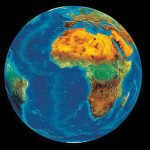
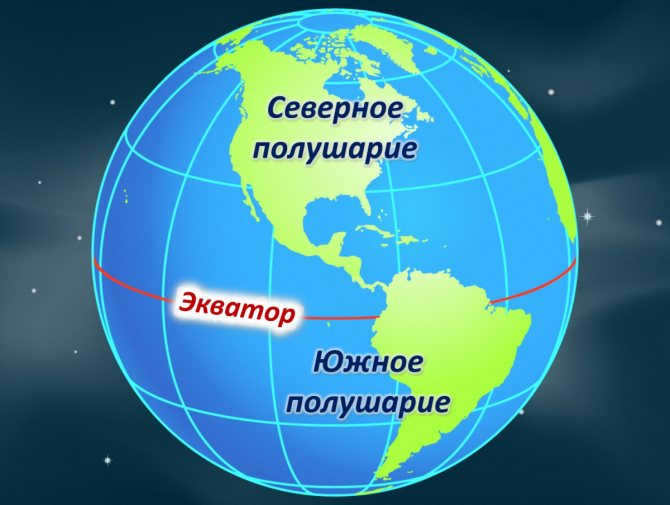
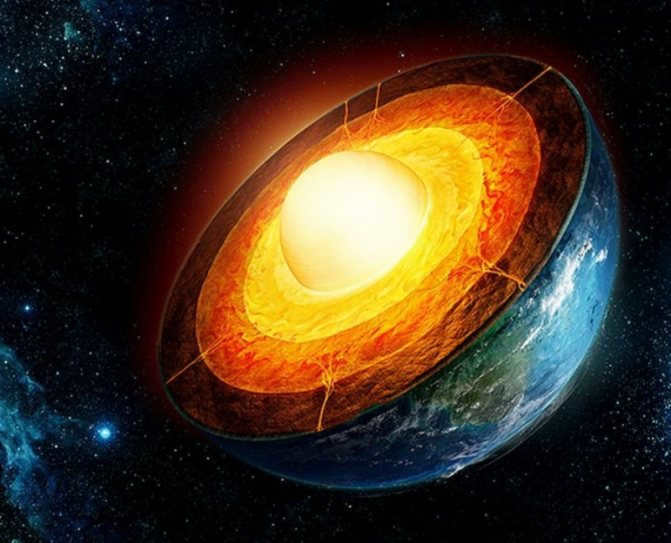
The Earth is a remarkable celestial body within the vastness of the universe, harboring a multitude of enigmas. Over the course of centuries, mankind has endeavored to unravel its secrets and riddles, such as its dimensions and density.
Across the globe, diverse cultures have bestowed various names upon our planet, including Earth, Gaia, Terra, Mir, and the blue planet. Humanity acknowledges that this extraordinary sphere is teeming with an extraordinary array of life forms, yet its origins remain shrouded in mystery.
The Earth’s shape and geometric measurements are fundamental principles used to describe it as a celestial object. During the Middle Ages, there was a prevailing belief that the planet had a flat structure, occupied a central position in the universe, and that the Sun and other planets orbited around it.
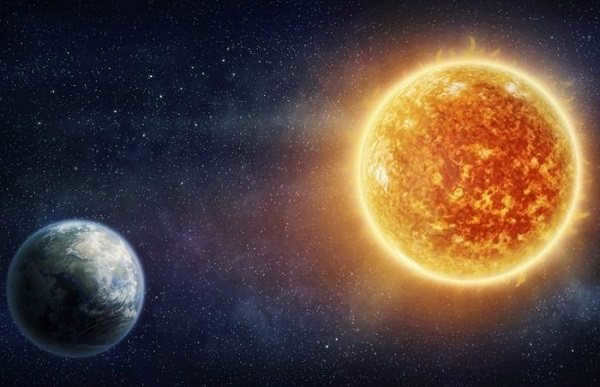
However, courageous scientists such as Giordano Bruno, Nicolaus Copernicus, and Isaac Newton challenged and disproved these beliefs. Through mathematical calculations, they demonstrated that the Earth is actually a spherical shape with flattened poles and that it revolves around the Sun, rather than the other way around.
The planet’s structure is incredibly diverse, despite its relatively small size compared to the rest of the solar system. The equatorial radius measures approximately 6378 kilometers, while the polar radius is around 6356 km.
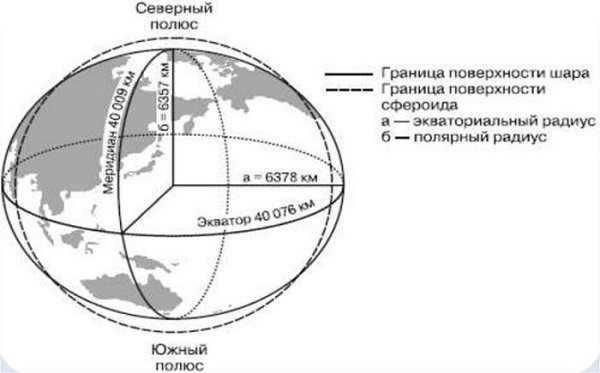

The distance between the poles of the Earth is 40008 kilometers, while the equator stretches for 40007 kilometers. This information indicates that the planet has a slightly flattened shape, with a mass of 5.9742 × 1024 kg.
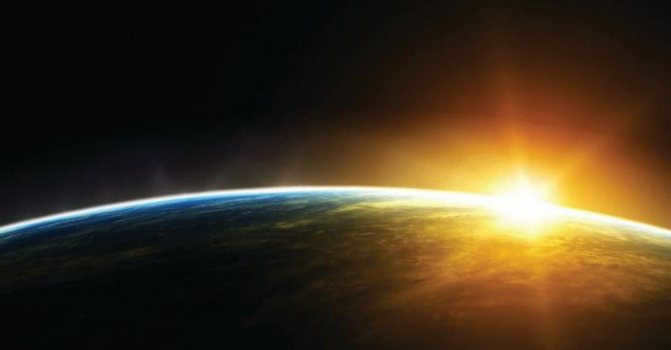
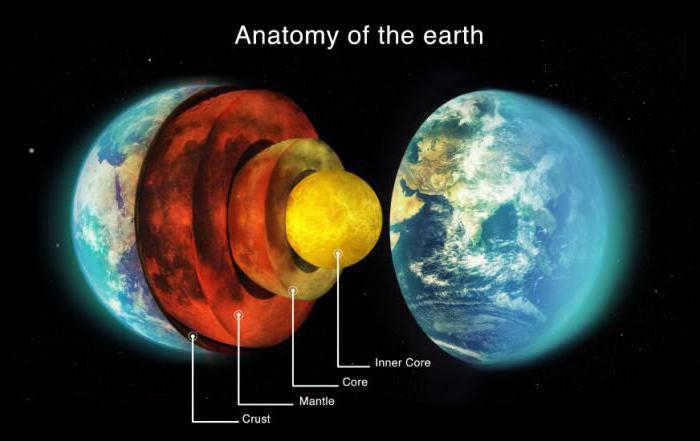
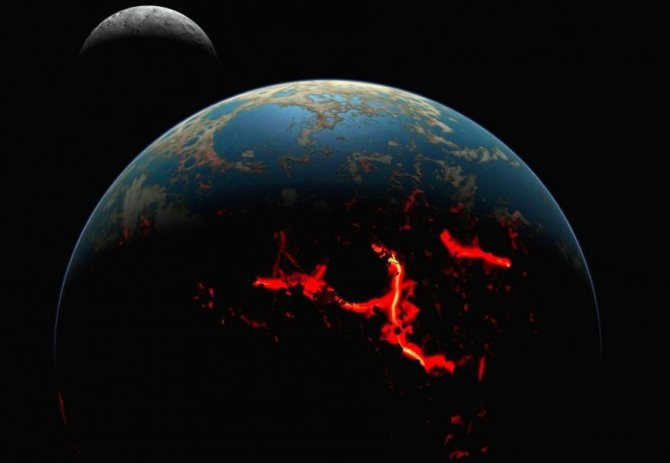
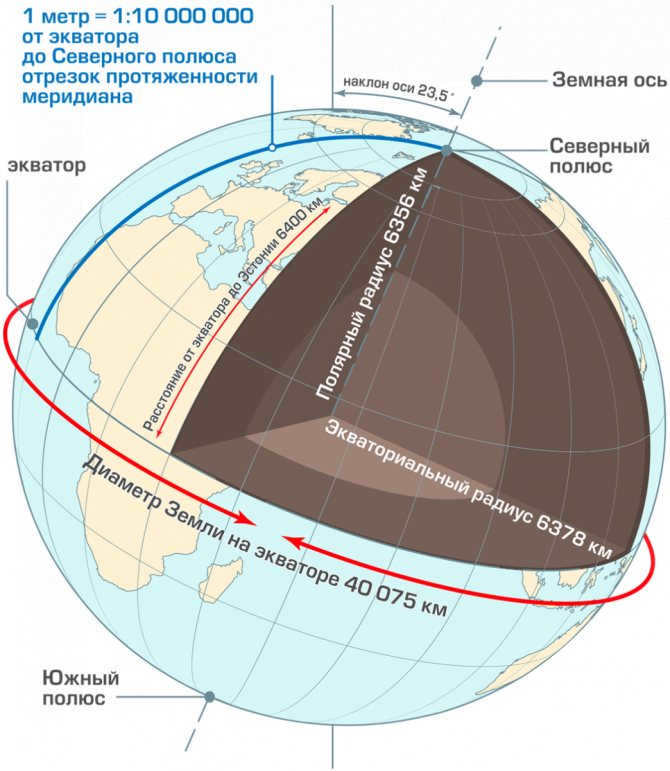
The Earth’s density was initially discovered by I. Newton in 1736, who established that it falls within the range of 5 to 6 g/cm3. Further measurements have provided more precise data, referred to as the average density of the Earth. This value surpasses the density of the upper layers of the Earth’s crust, which can be more accurately determined based on numerous rock surface measurements.
Calculating the density of the Earth’s surface is still feasible for scientists, but determining this value at depths greater than 16 kilometers remains impossible. To ascertain these measurements, factors such as the velocity of seismic waves, gravity, and various other parameters are taken into consideration.
Earth’s Layers
The Earth is made up of various layers that have unique characteristics. Each layer is symmetrical around a central point. If you were to visually cut through the Earth’s surface, you would see different layers with distinct compositions, states of matter, densities, and more.
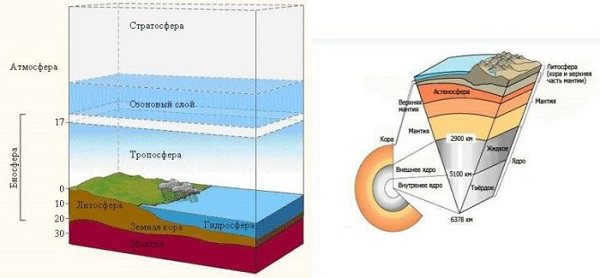
All shells can be categorized into two main groups:
- The first group consists of the internal shells, which include the Earth’s crust and the Earth’s mantle. These shells are responsible for the internal structure of the planet.
- The second group is made up of the external shells, which encompass the hydrosphere and the atmosphere. These shells are responsible for the external environment of the planet.
Each shell has its own unique structure, which is the subject of study for various scientific disciplines. Despite the rapid technological advancements of our time, there are still many unanswered questions regarding these shells.
A brief contemplation
It is common knowledge that the mean density of the planet matches that of Earth, meaning these measurements are in a 1:1 ratio. Various formulas are employed to determine precise dimensions such as mass, weight, and other parameters.
Earth stands out as a remarkable celestial body with numerous enigmas yet to be unraveled. Among these mysteries lies the question of what lies beneath the planet’s surface, in the deep recesses of the oceans, and what the density is at depths surpassing seventeen kilometers beneath the Earth’s crust.
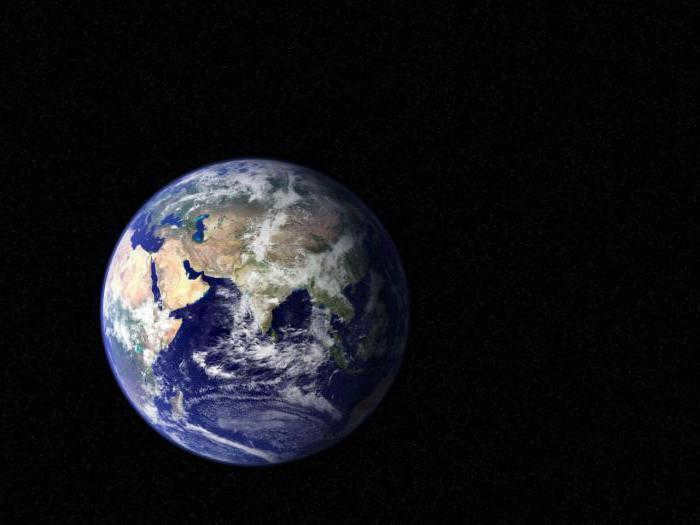
The inquiry into the origins and composition of the Universe captivates scientists worldwide. While the exploration of outer space has yet to provide all the answers, several inquiries have already been resolved.
Types of Earth’s Crust
The Earth’s crust is a shell that makes up a small fraction, approximately 0.473%, of the planet’s total mass. The crust reaches a depth of 5 to 12 kilometers.
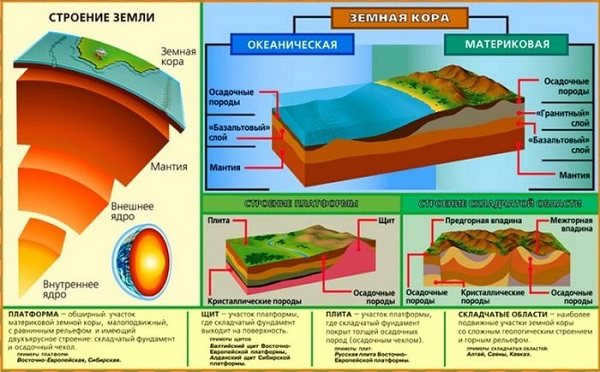
It is worth mentioning that scientists have never really delved deeper, and if we draw an analogy, the crust could be compared to the peel of an apple in relation to its overall volume. Further and more detailed examination would require a significantly higher level of technological advancement.
If we were to examine the planet in a cross-section, we could identify the following types of Earth’s crust, based on the varying depths of penetration into its structure:
- Oceanic crust – primarily composed of basalt and located at the bottom of the oceans, beneath extensive layers of water.
- Continental or continental crust – The land is covered by the crust, which has a highly diverse chemical composition, comprising 25% silicon, 50% oxygen, and 18% various other elements from the periodic table. To facilitate the study of this crust, it is further classified into upper and lower crust, with the latter containing the oldest formations.
As the crust descends deeper, its temperature rises.
Additional information
- While a person may feel like they are standing still, they are actually in motion along with the Earth. This is because the Earth rotates around the sun and on its axis. Depending on their location, individuals can be moving at a speed of 1600 km/h in space. People near the equator move faster, while those in the northern and southern regions appear to be standing still.
- The Earth travels around the Sun at a speed of 107826 km/h.
- Scientists estimate that the Earth is approximately 4.5 billion years old.
- The core of the Earth is composed of magma.
- The Earth experiences water tides due to the gravitational pull from the Moon, which is its natural satellite.
- The coldest place on Earth is Antarctica, where temperatures can drop to -80 degrees Celsius or even lower.
- According to certain researchers, there is a theory that the Earth had two moons at some point in its history.
- Did you know that Earth has a higher average density compared to other planets?
- Did you know that out of all the planets in our solar system, Earth stands out with the strongest gravitational pull and magnetic field?
- Contrary to popular belief, the Earth is not a perfectly round sphere, but rather it resembles two flattened semicircles with bulges at the equator. This unique shape is a result of the planet’s rotation.
- In the beginning, there existed a supercontinent called Pangaea. Over time, the movement of the Earth’s crust led to the formation of the continents we know today.
- Within the protective layer of the atmosphere, there are areas known as ozone holes. The largest one, discovered in 2006, is located over Antarctica.
- Mount Everest stands as the highest point on the Earth’s surface, reaching an elevation of 8,848 meters above sea level.
- The Mariana Trench holds the title for the deepest point on the Earth, plunging 10,994 meters below sea level.
- The equatorial diameter of the Earth exceeds its polar diameter by an additional 43 kilometers.
- d – diameter. This measurement connects opposing points on the circle, passing through its center.
- l – the length of the circle. It is the distance from the center, equidistant in all directions.
- r – radius. This refers to the line drawn from the center to any point on the circle.
- π is a numerical constant approximately equivalent to 3.14. While it is an infinite number, including more decimal places enhances the accuracy of the calculations.
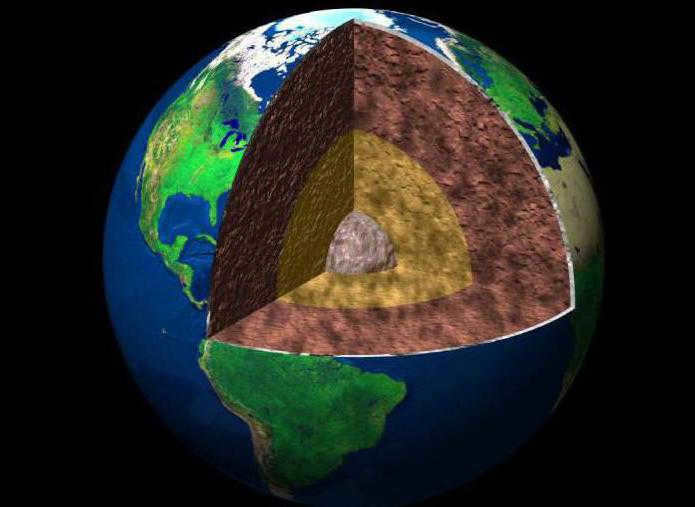
There are numerous enigmatic locations on Earth where peculiar occurrences take place. Scientists have made attempts to explain them: some were successful in uncovering the truth, while others still remain shrouded in mystery. One such enigma is the moving stones found on the Playa Plateau in the United States. Within this region, stones glide across the sand, leaving behind trails in the form of grooves. This extraordinary phenomenon is truly unparalleled, with no other location having experienced anything similar.
It is hypothesized that our planet was once adorned in purple. This hue was bestowed upon it by bacteria that thrived throughout the Earth. Eventually, the planet transformed into its current green-blue state.
The Earth’s Mantle
The Earth’s mantle is a crucial component of our planet. It encompasses the vast region between the crust and the core that we have discussed earlier, and it is composed of numerous layers. The thinnest section of the mantle measures approximately 5 – 7 km in depth.
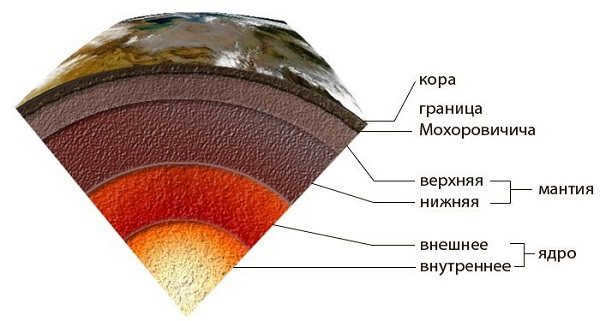
Due to the current level of scientific and technological advancement, it is not currently possible to directly study this specific section of the Earth. Therefore, scientists must rely on indirect methods to gather information about it.
Quite frequently, the formation of new Earth crust coincides with its interaction with the mantle, particularly in areas located beneath oceanic waters.
Presently, it is widely accepted that there exist both upper and lower mantles, which are separated by the Mohorovicich boundary. The proportions of this division have been reasonably calculated, although further refinement is necessary in the future.
Did you know?
Did you know that there is a belief that Earth is the sole planet in the vast universe to harbor complex life forms? While this claim remains unproven, scientists speculate that life can only flourish under conditions similar to those found on our home planet. It’s hard to imagine the existence of life forms that can adapt and thrive in completely different environments. This theory, though unchallenged, continues to spark debate and intrigue. Despite the mysteries surrounding the possibility of extraterrestrial life, scientists have discovered fascinating facts about our own planet:
The outer core
The planet’s core is not uniform either. The extreme temperatures and pressure in this region facilitate numerous chemical reactions and the distribution of masses and substances. The core itself is divided into two parts: the inner core and the outer core.
The outer core, which is approximately 3000 kilometers in thickness, consists primarily of iron and nickel in a liquid state. As it gets closer to the center, the temperature of this layer ranges from 4400 to 6100 degrees Celsius.
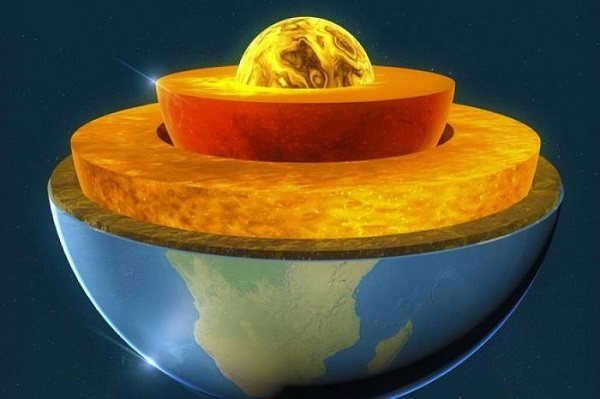
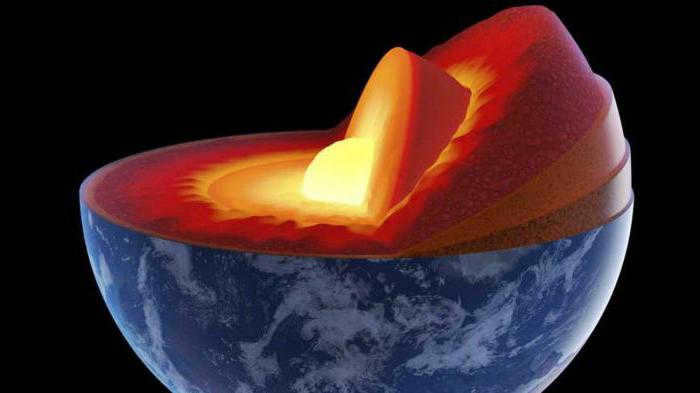
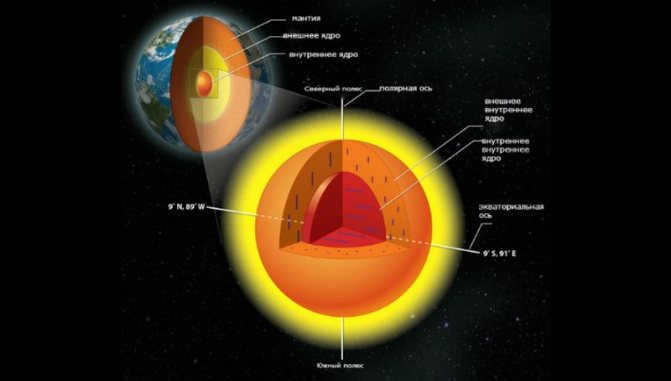
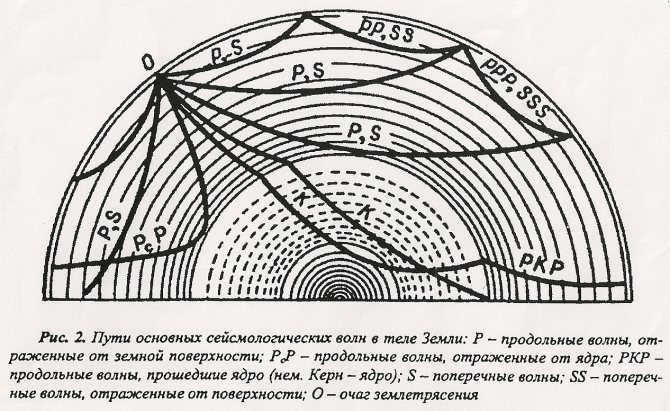
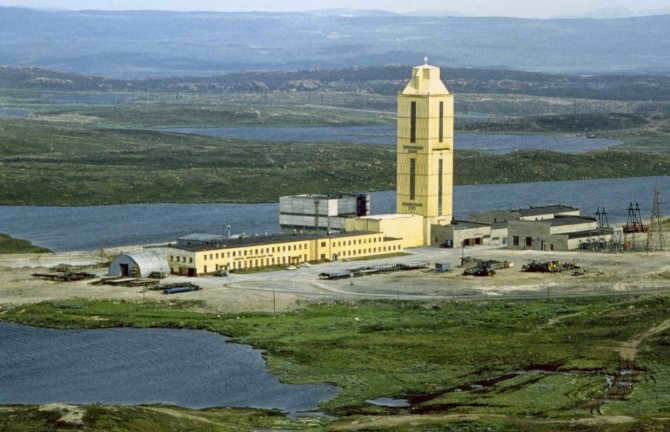
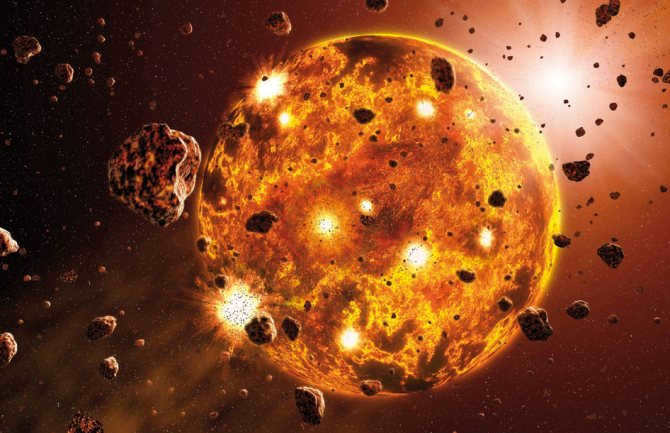
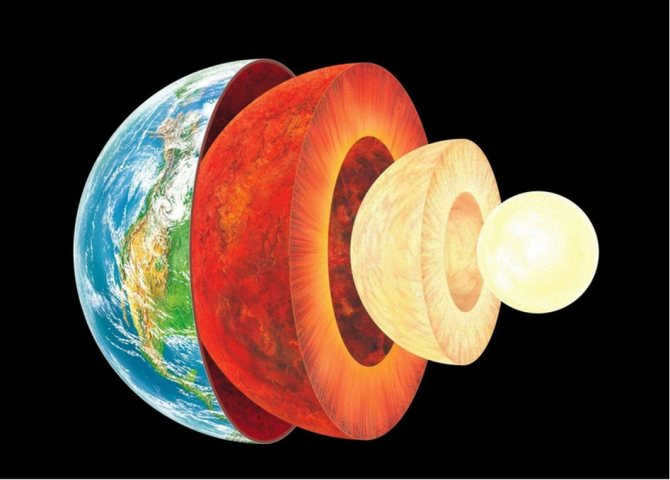

Facts: Earth-space
The distance between the Sun and the Earth is approximately 150 million kilometers. It takes slightly over eight minutes for light to travel from our star to the surface of our planet. The farther a star or planet is from us, the longer it takes for its light to reach us. For instance, there are stars whose light takes thousands of years to reach us, allowing us to observe the “past” of these celestial bodies. Even the sun is not visible in real-time, but rather as it appeared eight minutes ago.
Space is populated with numerous comets and debris. Fortunately, Earth’s protective layer shields us from these objects, as comets and space dust burn up in the upper atmosphere.
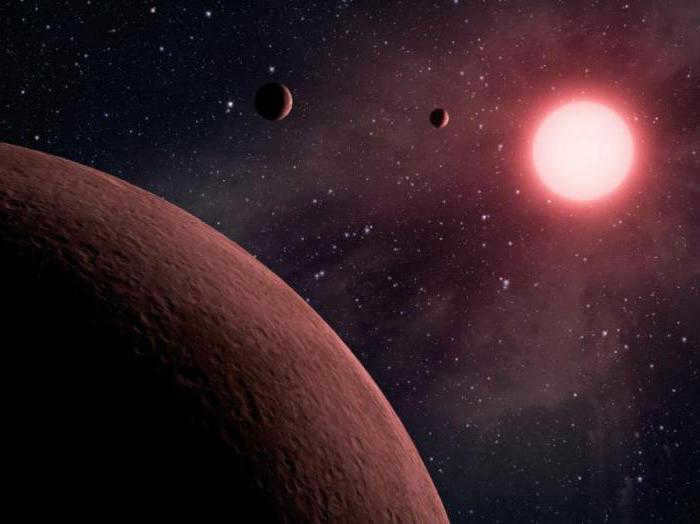
Exploring the Earth’s outer layers
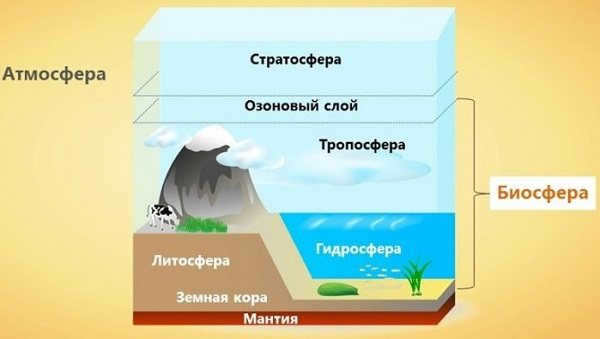
Planet Earth stands out from other celestial bodies known to scientists due to the presence of additional layers that surround it:
The approaches to investigating these layers vary significantly, as each of them differs in composition and the subject of study.
Hydrosphere
The hydrosphere encompasses the complete water envelope of our planet, comprising not only the expansive oceans, which cover approximately 74% of the Earth’s surface, but also the seas, rivers, lakes, and even the tiniest streams and reservoirs.
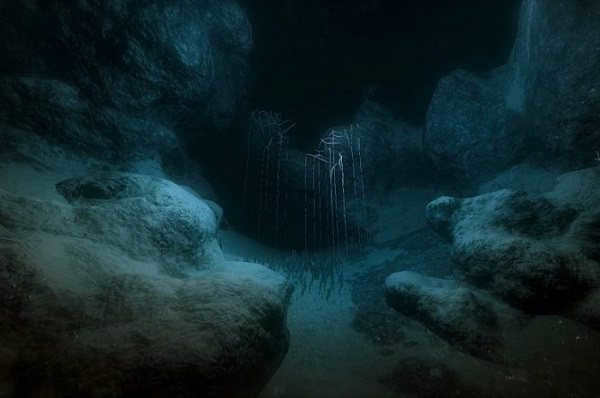
The Mariana Trench region contains the thickest part of the hydrosphere, measuring approximately 11 kilometers in depth. Water is the vital element that gives our planet its unique characteristic and sets it apart from all other celestial bodies in the cosmos.
With a volume of approximately 1.4 billion km3, the hydrosphere is the medium where life thrives and the atmospheric conditions are maintained.
The Atmosphere
The atmosphere is a gas envelope that surrounds our planet, providing a protective barrier against space objects such as meteorites, extreme cold, and other harmful phenomena that would otherwise be detrimental to life on Earth.
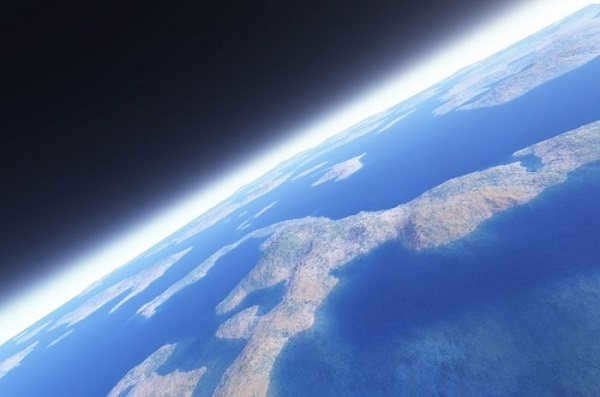
Various estimates suggest that the atmosphere’s width is approximately 1000 km. In close proximity to the Earth’s surface, the atmosphere possesses a density of 1.225 kg/m3.
The gaseous envelope is comprised of 78% nitrogen, 21% oxygen, and the remaining percentage consists of elements like argon, carbon dioxide, helium, methane, and other substances.
Biosphere
No matter the approach taken by scientists in their examination, the biosphere holds utmost significance within the Earth’s composition – functioning as the habitat for all forms of life, including mankind.
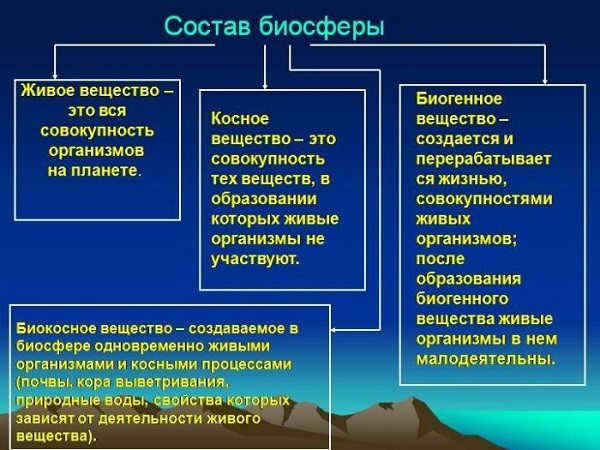
The biosphere is not only home to living organisms, but it also undergoes continuous transformations due to their impact, particularly the influence of humans and their actions. The eminent scientist V.I. Vernadsky formulated a comprehensive theory about this realm, while the initial definition was coined by the Austrian geologist Suess.
Measuring the Distance to the Earth’s Core
Before we can determine the exact distance in kilometers to the center of the Earth, we must first understand the unique shape of our planet. The Earth is best described as a slightly flattened ellipsoid, although some may argue it resembles a geoid if it were entirely composed of liquid. The Earth’s topography also plays a significant role, presenting its own complexities. Here are a few notable facts about the Earth’s topography:
By utilizing the polar and equatorial radii, which measure 6,356.77 km and 6,378.160 km respectively, we can calculate the precise distance to the center of the Earth in kilometers.
Employing Indirect Research Instruments
As a result of this, the depths of our planet, located at a significant depth, are examined based on the findings of seismic exploration. Approximately ten surface vibrations are observed every hour in various locations around the globe. Utilizing the information gathered, numerous seismic stations carry out investigations on the propagation of waves during an earthquake. These vibrations spread out akin to circles on the surface of water when an object is thrown in. When the wave enters a denser layer, its velocity undergoes a significant change. By utilizing this data, scientists have been able to ascertain the boundaries of the inner layers of our planet. The Earth’s structure comprises three primary layers.
Our world is a wandering blue celestial body
The Earth’s position in relation to the Sun impacts the presence of specific substances in both liquid and gas forms. As a result, the composition of the Earth is varied, giving rise to the atmosphere, hydrosphere, and lithosphere. The atmosphere primarily consists of a blend of gases: nitrogen and oxygen make up 78% and 21% respectively. Additionally, there is a small amount of carbon dioxide – 1.6%, as well as trace amounts of inert gases like helium, neon, xenon, and others.
How long does it take to circumnavigate the planet on foot?
The calculation of the equatorial circumference in kilometers has provided us with a figure. Utilizing this information and estimating the average walking speed, we can determine the time required to complete a journey around the Earth. The formula employed is as follows: t=S:V. The variables are represented by Latin letters.
Walking around the Earth along the equator would necessitate covering a distance of 40075 km. The pedestrian’s average speed is 6 km/h. Plugging these values into the formula yields the result: 40075/6=6679 hours. When converted to days, this amounts to 278.
Naturally, one does not walk without taking breaks. Assuming a daily travel time of 6 hours, the required duration would increase fourfold – amounting to 1112 days. In other words, it would take approximately 3 years.
The calculations provided are purely hypothetical, as the equator only intersects land in America, Africa, and the Indonesian islands. The remaining portion of the equator traverses the vast oceans, including the Atlantic, Indian, and Pacific.
Calculations for Radius and Diameter
With knowledge of the circumference, determining the radius and diameter of the globe is a straightforward process. The following formulas can be utilized: d=l/π; r=½*π. In this context, the variables represent:
There is no need to utilize both equations. The diameter and radius are connected. You can calculate one value, and then determine the other: the diameter is twice the radius and vice versa.
The circumference varies at the equator and the poles. Consequently, the equatorial radius is larger than the polar radius. The former measures 6378 km, while the latter measures 6356 km. Interestingly, the Sun’s diameter is 109 times greater than that of the Earth.
Measuring the Earth’s Circumference: A Geometric Approach
When it comes to determining the circumference of the Earth along the equator, advanced instruments and space satellites are typically employed. However, it is possible to obtain this data using basic knowledge of geometry. One of the earliest known attempts at this method was carried out by the Ancient Greek scholar Eratosthenes.
According to ancient legends, travelers informed Eratosthenes that on the summer solstice, they witnessed a unique phenomenon: the bottom of the deepest wells in Siena, located 500 miles south of Alexandria, were illuminated and objects did not cast any shadows. This indicated that the sun was directly overhead. In contrast, in Eratosthenes’ hometown of Alexandria, objects did cast shadows and the sun did not reach the bottom of deep wells.
During the middle of the longest day of summer, Eratosthenes conducted a measurement of the shadow length of the city obelisk, which he already knew the height of. Based on this information, he calculated the length of an imaginary line connecting the top of the obelisk to the end of its shadow. By knowing these measurements, he was able to determine the angles of the imaginary triangle to be 7 degrees. This indicated that Siena was displaced in relation to Alexandria.
An angle of 7 degrees represents approximately 1/50th of a full circle, which always measures 360 degrees. The astronomer continued his calculations and multiplied the distance to Siena by 50. The resulting length was 25,000 miles, which is the approximate circumference of the Earth. Modern studies have shown that Eratosthenes was not far off, as the equatorial circumference of the planet is actually around 24,894 miles or 40,075 kilometers.
Eratosthenes’ miscalculation can be attributed not to the simplicity of the computations he employed. This technique remains precise and continues to be employed today, albeit with more sophisticated instruments. The scientist was unaware of the precise distance between the cities. During that time, it was determined by the number of days it took for a caravan to travel between them.
The second factor contributing to the inaccuracy is that Alexandria and Siena lie on different meridians. Nowadays, the circumference between objects situated on the same meridian can be accurately determined.
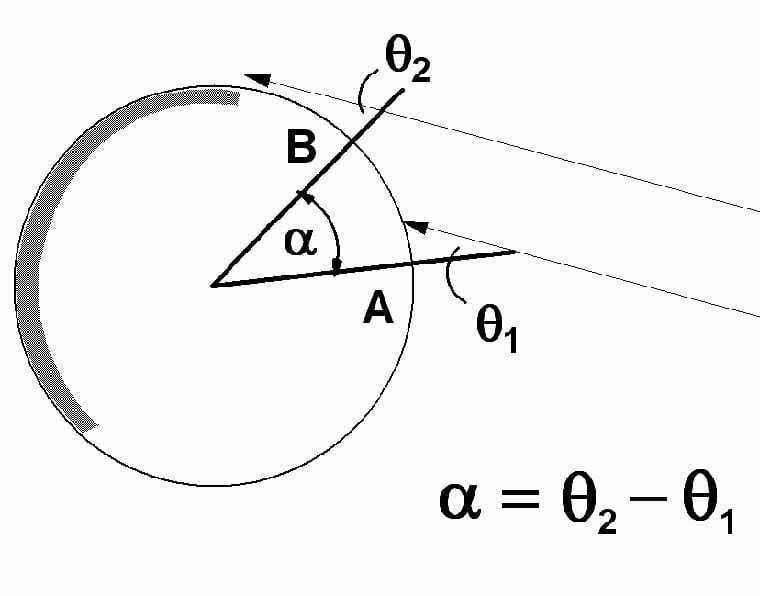
Measuring the circumference of the Earth according to Eratosthenes. Credit: kipmu.ru.
Explanation of the concept
The equator is defined as an imaginary line that runs directly along the center of our planet. It has a geographic latitude of 0 degrees and acts as a reference point for scientists to carry out various calculations, which will be discussed below. The equator splits the globe into two perfectly equal halves.
Important! In areas where the equator passes through, the duration of day and night is always the same, without any variation.
The equatorial region receives the highest amount of ultraviolet rays. As a result, the further a location is from this imaginary line, the less heat and light it receives. This is the reason why the highest recorded temperatures have been observed near the equator.
Geodesy
is the scientific discipline that deals with the measurement and representation of the Earth’s surface. It involves the study of the shape, size, and gravity field of the Earth, as well as the mapping and positioning of points on the Earth’s surface. Geodesy plays a crucial role in various fields, such as surveying, cartography, navigation, and satellite positioning. By accurately measuring and representing the Earth’s surface, geodesy helps us understand the planet and its processes, as well as enabling us to navigate and map our world.
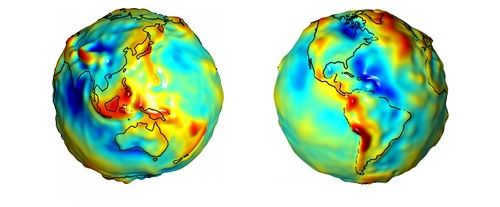
Geodesy, the field of study that deals with measuring the dimensions and form of the Earth through surveys and mathematical calculations, plays a crucial role in understanding the Earth’s size and shape.
Over the course of history, geodesy has held significant importance as early scientists and philosophers attempted to determine the Earth’s shape. Aristotle is credited as the first person to make an effort to calculate the Earth’s size, making him an early geodesist. Following Aristotle, the Greek philosopher Eratosthenes estimated the Earth’s circumference to be 40,233 kilometers, which is only slightly larger than the currently accepted measurement.
To investigate and utilize geodesy, scientists frequently make use of the ellipsoid, geoid, and reference ellipsoid. An ellipsoid is a hypothetical mathematical construct that presents a streamlined, simplified depiction of the Earth’s exterior. It is employed to calculate distances on the surface, disregarding variables such as changes in elevation and topography. Considering the actual characteristics of the Earth’s surface, surveyors rely on the geoid, a model of the planet that is developed using the average global sea level and thus accounts for variations in elevation.
The foundation of modern geodesy relies on data serving as benchmarks for worldwide surveying. Currently, advancements in technology, such as satellites and global positioning systems (GPS), enable surveyors and other scientists to achieve highly precise measurements of the Earth’s surface. These measurements are so precise that they can gather information about the Earth’s surface with an accuracy of centimeters, providing the most detailed assessments of the Earth’s dimensions and form.
How was our understanding of the mantle developed?
During the early 1900s, there was intense debate surrounding the Mohorovitch boundary. Some scientists argued that this boundary marked the location where high-density rocks underwent metamorphism. Others proposed that the increase in seismic wave velocity at this boundary was due to a change in rock composition from lighter to heavier types.
This latter explanation is now widely accepted within the scientific community and forms the basis for our current understanding and research methods regarding processes occurring within the Earth. The Earth’s mantle, being deeply buried and not accessible at the surface, remains a challenge for direct investigation.
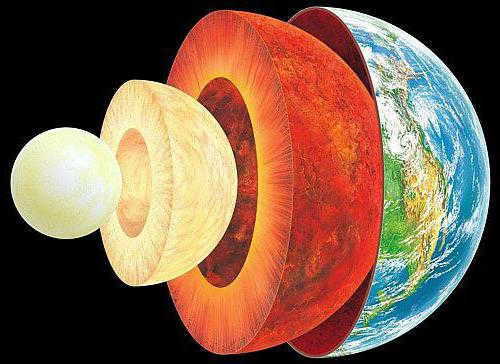
Thus, the primary data is acquired using geochemical and geophysical techniques. In general, it is an extremely challenging task to reconstruct the information from the available sources. The mantle, which receives radiation from the Earth’s core, undergoes heating ranging from 800 degrees at its uppermost region to 2000 degrees in proximity to the core. It is hypothesized that the matter within the mantle is in constant motion.
If we envision the Earth as a sphere, which is the prevailing perspective, then the solution is straightforward and lies on the Earth’s surface. The Earth has a diameter of 12,742 km, consequently, the distance to the Earth’s core, or the Earth’s radius, is half of the diameter, which equals 6,371 km.
What is the true shape of the Earth?
However, the Earth is not a perfect sphere. Due to its rotation, it is compressed at the poles (this compression can be observed through a telescope when looking at Jupiter) and as a result, the concept of diameter becomes less meaningful. Instead, we can only discuss the cross-section of the planet in various directions. This shape of the Earth is referred to as an oblate spheroid (imagine an ellipse rotating around its shorter axis). In everyday language, an ellipse, which is a mathematically precise shape, is often referred to as an oval, although it is not an exact term.
The Earth has a equatorial diameter of 12.756 km and a polar diameter of 12.713 km, as represented by an ellipsoid of rotation. This means that the distance from either the North or South pole to the center of the Earth is 6.356.5 km, and the distance from any point on the equator to the center is 6.378 km.
So how do we interpret the radius of 6.371 km, which doesn’t match either of the semi-axes of the ellipsoid of rotation? This is known as the volume radius, which refers to the radius of a hypothetical sphere with the same volume as the ellipsoid of rotation.
However, when accurately measured, the equator is not a perfect circle. It actually appears as an ellipse with a slight compression, meaning that the distance to the center of the Earth varies slightly depending on our location along the equator. Nevertheless, this difference is minuscule. Additionally, the North and South Poles are not symmetrical in relation to the center of the Earth. In fact, the North Pole is 40 meters farther from the center than the South Pole. To describe the Earth’s shape more accurately than a rotating ellipsoid, scientists use a body known as a triaxial ellipsoid.
Interestingly, the shape of the Earth is even more intricate than a triaxial ellipsoid. Ongoing research on the Earth’s shape incorporates data from ground and satellite measurements, constantly refining our understanding of its true form.
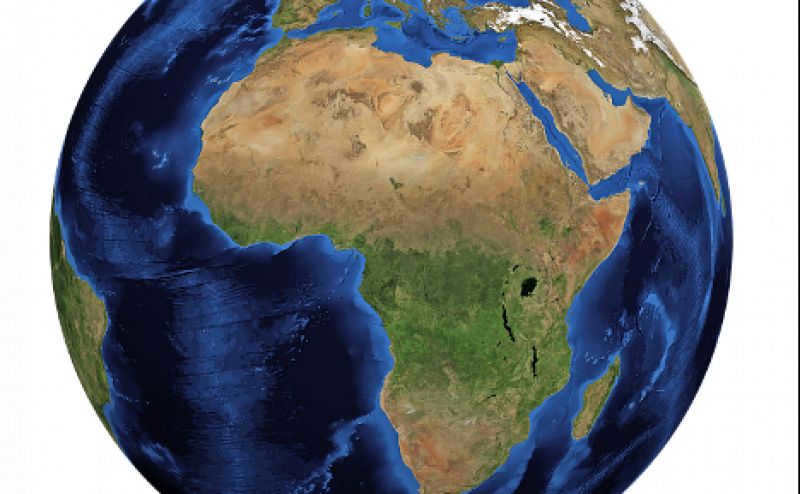
The initial estimation of the Earth’s size
In 240 BC, the Earth’s size was measured for the first time. Eratosthenes, a Greek scientist, took into consideration the Earth’s curvature and the distance between two cities, Siena (Aswan) and Alexandria. This allowed him to calculate the Earth’s circumference, diameter, and the distance to its core.
Two incredible journeys to the heart of the Earth
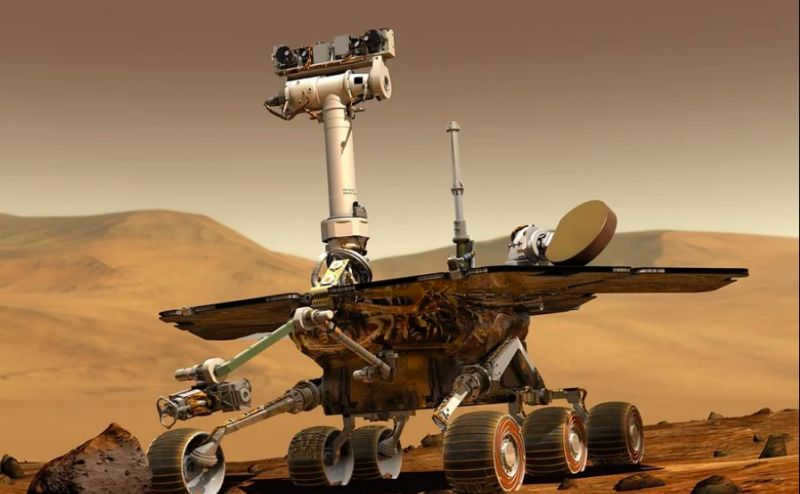
The possibility of embarking on a voyage to the core of the Earth has always captivated people’s imaginations, even in the realm of fantasy. One such extraordinary journey was documented by the renowned Italian poet Dante Alighieri in his renowned literary masterpiece, “The Divine Comedy.”
In the company of the esteemed ancient Roman poet Virgil, Dante ventured through the treacherous nine circles of Hell and ultimately arrived at the very center of the Earth. There, amidst the icy depths of Lake Cocytus, Satan, the ultimate adversary of humanity, was frozen in eternal torment, surrounded by the traitors Judas, Cassius, and Brutus. According to Dante’s intricate narrative, the path from the Earth’s core leads upward, traversing Purgatory and eventually reaching the blissful Earthly Paradise. Such was the vividness and realism of Dante’s account that his contemporaries had no reason to doubt the authenticity of his extraordinary “journey.”

